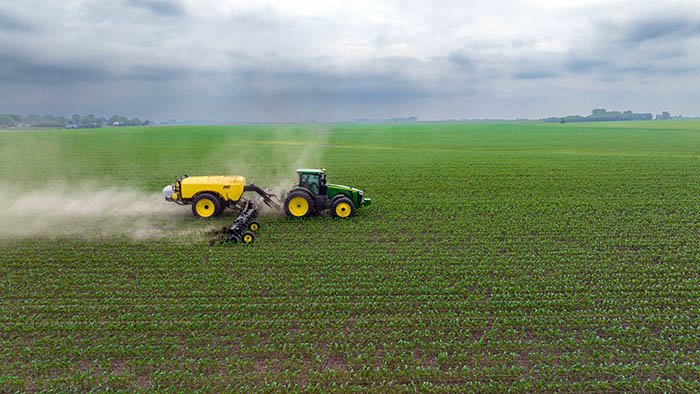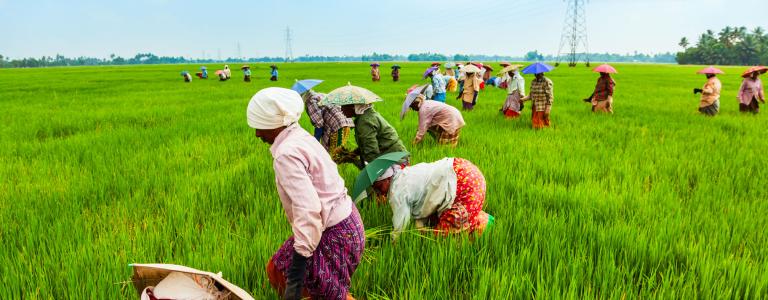The Future of Lasting Agriculture: Advancements and Technologies
The Future of Lasting Agriculture: Advancements and Technologies
Blog Article
Enhance Agricultural Performance With High-Quality Water Soluble Polymers
These polymers provide a variety of benefits that can transform traditional farming approaches, from improving water retention and effectiveness to enhancing soil framework and nutrient delivery systems. By utilizing the power of cutting-edge polymer remedies, farmers can potentially open brand-new paths in the direction of achieving greater plant returns while reducing ecological influences.

Benefits of Water-Soluble Polymers
Water-soluble polymers use a plethora of benefits in farming applications because of their boosted water retention homes and capacity to enhance soil structure. Agriculture. These polymers, when included in the soil, can considerably raise water holding ability, minimizing the regularity of irrigation needed by crops. By developing a gel-like compound when combined with water, water-soluble polymers produce a storage tank that slowly releases moisture to plant roots, guaranteeing a much more regular water system throughout completely dry spells
In addition, these polymers assist in protecting against dirt erosion by binding soil particles together, thus enhancing dirt structure and security. Boosted dirt framework enables far better root infiltration and aeration, promoting healthier plant development and greater plant yields. Water-soluble polymers likewise aid in nutrient retention by minimizing leaching, ensuring that crucial nutrients stay offered to plants for a longer duration.
Improved Water Retention and Performance
Enhancing agricultural water retention and efficiency via the unification of innovative polymer technologies has actually become a critical focus in modern-day farming methods. Water-soluble polymers play a crucial duty in improving dirt structure, boosting water infiltration, and minimizing water evaporation rates. By forming a thin film on the soil surface, these polymers help to avoid water drainage and increase the soil's water-holding capacity, ensuring that plants have access to a sufficient supply of water.
Furthermore, using high-grade water-soluble polymers can substantially minimize the frequency of watering, as they boost the dirt's capacity to retain dampness for longer durations. This not only conserves water yet also minimizes the energy and labor expenses connected with watering practices. In addition, boosted water retention and performance result in far better nutrient uptake by plants, resulting in enhanced crop yields and general agricultural efficiency.
Improved Nutrient Shipment Systems
Provided the considerable impact of top notch water-soluble polymers on boosting water retention and performance in agriculture, the focus currently moves in the direction of enhancing nutrient delivery systems to better boost crop growth and yield. Boosted nutrient shipment systems play a vital function in guaranteeing that plants receive the necessary nutrients in a form that is readily offered for uptake, promoting their general health and wellness and productivity. By incorporating water-soluble polymers right into nutrient distribution systems, the performance of nutrient uptake by plants can be significantly boosted.
One key benefit of using top notch water-soluble polymers in nutrient distribution systems is their ability to manage the launch of nutrients, making sure a regulated and constant supply to plants over an extended period (Agriculture). This controlled release device helps protect against nutrient leaching and overflow, therefore making best use of vitamins and mineral usage by plants and reducing ecological influence

Dirt Structure Optimization Techniques
Maximizing soil structure is paramount in modern-day agriculture for making best use of plant yields and promoting sustainable land monitoring techniques. Soil framework optimization methods play an essential function in guaranteeing that soil offers an ideal atmosphere for plant development. One crucial technique is the enhancement of natural matter, such as garden compost or manure, which aids improve soil framework by boosting its water-holding ability and nutrient retention.
Moreover, practicing minimum tillage or no-till farming can stop dirt compaction and advertise the growth of a healthy and balanced soil framework. Cover cropping is another efficient technique that includes growing plants specifically to enhance the dirt and safeguard, preventing disintegration and boosting soil framework.
Additionally, carrying out crop rotation techniques can aid break parasite and illness cycles, while likewise improving dirt structure via the varying origin structures of various crops. Generally, using these soil structure optimization methods can result in raised agricultural site web performance, lowered environmental impact, and long-term sustainability in farming methods.
Sustainable Solutions for Crop Returns

To deal with the difficulties of optimizing crop yields while advertising sustainable land monitoring techniques, discovering lasting services comes to be vital in modern-day farming. visit homepage One lasting service for enhancing crop returns is the use of precision agriculture techniques.
Additionally, advertising crop turning and cover chopping can aid keep soil health, minimize disintegration, and enhance nutrition biking, ultimately adding to greater returns in time. Integrated bug management methods also play a crucial duty in sustainable plant production by lessening the dependence on chemical pesticides and promoting natural parasite control methods.
Furthermore, purchasing study and development for establishing drought-resistant plant selections and climate-resilient farming techniques can aid mitigate the impact of climate modification on agriculture while making certain regular yields in the face of environmental challenges. By embracing these lasting options, farmers can attain greater plant yields while protecting the wellness of the land for future generations.
Conclusion
In verdict, the usage of top notch water-soluble polymers in farming uses numerous advantages such as better water retention, enhanced nutrient distribution systems, and maximized soil framework. By implementing sustainable solutions for crop returns, farmers can dramatically enhance agricultural efficiency and effectiveness. Agriculture. Water-soluble polymers provide a environmentally friendly and affordable method to boost the general performance of farming techniques, causing better end results for both farmers and the atmosphere
These polymers provide an array of benefits that can revolutionize typical farming techniques, from improving water retention and performance to enhancing soil framework and nutrient delivery systems.In addition, these polymers aid in stopping soil disintegration by binding dirt bits with each other, thus boosting soil framework and security. By developing a slim view film on the soil surface area, these polymers help to protect against water runoff and boost the soil's water-holding capability, making certain that plants have access to an ample water supply.
Soil structure optimization methods play a vital duty in guaranteeing that dirt provides an optimal setting for plant growth.In conclusion, the use of high-grade water-soluble polymers in agriculture uses countless advantages such as improved water retention, improved nutrient distribution systems, and enhanced soil structure.
Report this page